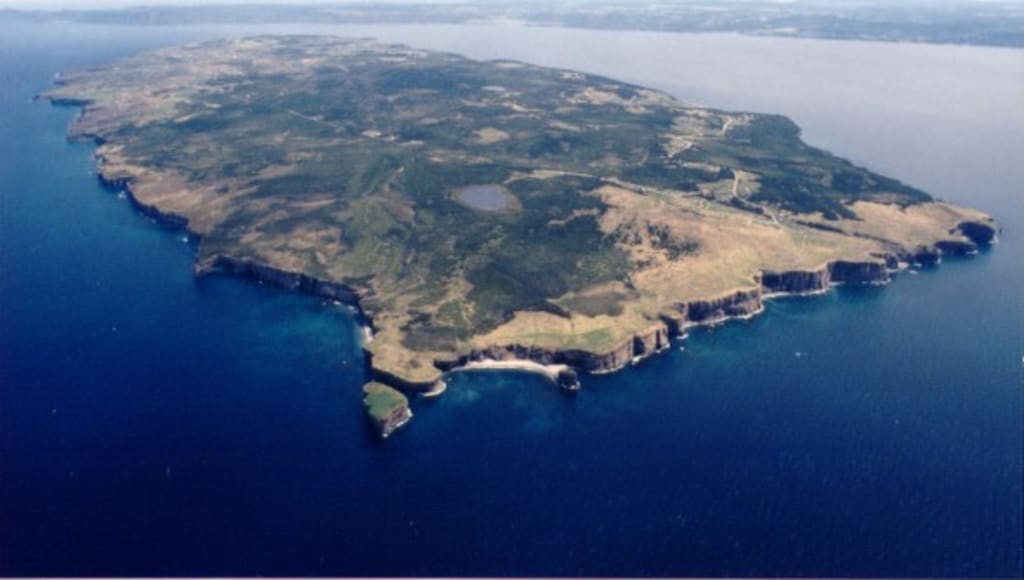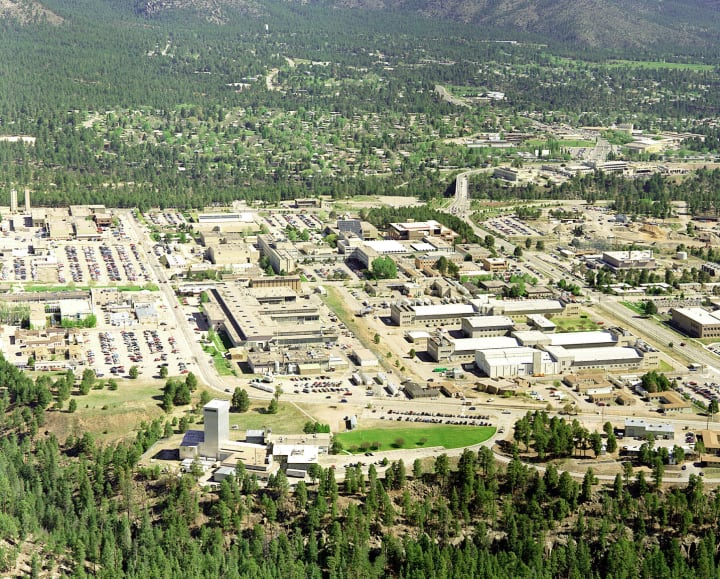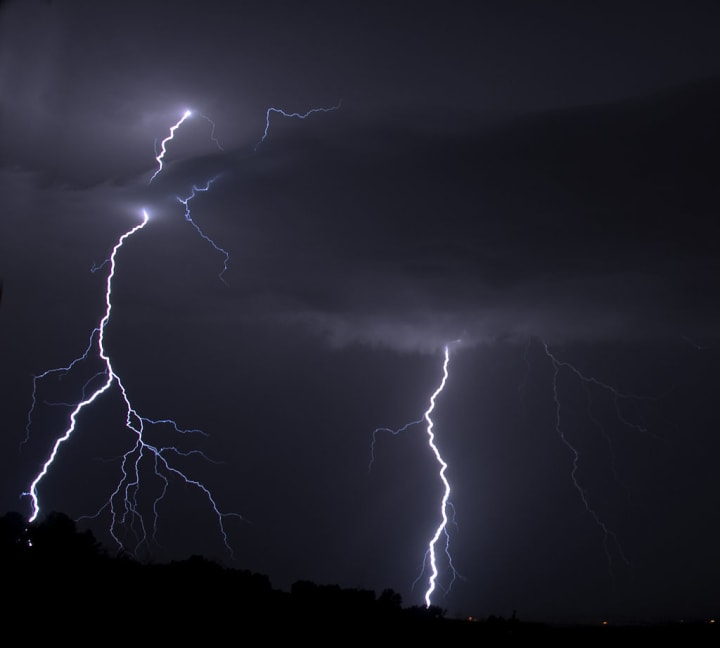The Bell Island Boom
Secret super weapon or lightning superbolt?

In 1978, the tiny remote community of Bell Island, Newfoundland was rocked by a sudden, ear-splitting explosion that seemed to have no precise epicenter and no discernible source. The phenomenon reportedly electrocuted livestock, melted power lines, and manifested floating balls of fire. Whatever struck the island apparently released enough energy to set off the American nuclear test watch satellites and drew the attention of weapons researchers from the Los Alamos National Laboratory, who showed up at the site soon after.
The cause and precise nature of the event remain unknown, but there are numerous hypotheses ranging from ball lightning to lightning superbolts. Of course, as one would expect, there are also several conspiracy theories surrounding the strange event, with many believing that the Bell Island Boom is proof that the government was testing secret "super weapons."
Bell Island itself is a small island, around 6 miles long and around 2 miles wide, and is home to only three communities. It was once one of the world's major iron ore producers thanks to its productive mine, but by 1978 the mine had closed. After, Bell Island's economy was far less prosperous and the population had shrunk dramatically.
On 2 April 1978, a sudden explosive noise was heard throughout the island, reportedly heard from as far as 62 miles away. There were reports of damage to electrical wiring and one family in particular, the Bickfords, reported numerous physical damages to their property. They claimed the explosion caused holes in their roof and their television and fuse boxes had actually exploded. The roof of their chicken coop was destroyed and the five chickens inside killed. Near their shed were a couple of holes in the snow that they said looked like buried explosives had detonated.
Later, even stranger stories began circulating. The Bickford's young grandson claimed that he saw a hovering ball of light after the boom. A woman in Newfoundland reported seeing a beam of light shining from the sky onto the island. Some people on Bell Island claimed that they heard a strange ringing tone just before the blast.

John Warren and Robert Freyman from the Los Alamos National Laboratory (then the Los Alamos Scientific Laboratory) in New Mexico appeared just after the event took place, inspiring rumors about weapons testing.
Internet versions of the stories describe Warren and Freyman as shady government types that appeared on the island, snooped around, and left without saying a word to anyone. The truth is that they spoke openly with media and other scientists about their reasons for being there.
Warren and Freyman had been monitoring imagery from the Vela satellites, which constantly scanned the planet for the distinct signatures of nuclear bomb detonations. They also picked up large lightning flashes, which is part of how we learned of the existence of lightning superbolts.

Lightning superbolts are unusually large bolts of lightning that last about a thousandth of a second (compared to the roughly 30 millionths of a second duration of a non-superbolt lightning bolt). They almost always happen in the upper atmosphere, usually over oceans. These storms in the upper atmosphere can often occur with people on the ground being completely unaware, seeing nothing but a bright clear day. Lightning superbolts are rare (only about five of every ten million bolts of lightning are classified as a superbolt) but they do happen.
According to a Canadian Broadcasting Corporation reporter, Rick Cera, who spoke with them off camera, Warren and Freyman had been tracking superbolts over the east coast since December of 1977. They heard about the Bell Island Boom and saw that it correlated with a rare overland superbolt. They were sent to investigate what kind of damage it might have caused.
Conspiracy theories surrounding the boom range from tests of some kind of superweapon by the United States or Soviet Union, to a Tesla-inspired doomsday device, or even a nuclear device of some sort.
A 2004 documentary, The Invisible Machine, hypothesized that the Boom was a test of an electromagnetic pulse weapon. Brian Dunning, of Skeptoid podcast, dismissed this theory, stating: "This particular theory is deeply flawed, and depended upon a hypothesized beam weapon being attracted to the iron ore from Bell Island's old mines. These filmmakers were apparently pretty confused to think that natural iron ore is a terrifically powerful magnet, which of course it's not. Although iron is magnetic and can be magnetized, natural iron ore has its molecules jumbled in every direction and rarely happens to have a significant magnetic field, certainly not strong enough to divert or attract a particle beam" (Dunning, 2010).
None of these more conspiratorial theories have any basis in reality. There isn't any real evidence to support the idea that the Bell Island Boom was made by a manmade weapon. There is, however, plenty to support the hypothesis that the event was a freak overland lightning superbolt.
The damage to electrical wiring and appliances is consistent with enormous voltage propagating throughout the island's copper power grid, as one would see with an immense lightning strike. The damage to the chicken coop's roof and the electrocuted chickens themselves are also consistent with a lightning strike. So were the holes in the snow.
Given the notoriously unreliable nature of eyewitness testimony and the fact that anecdotal evidence is not scientific evidence, we must dismiss the Bickfords' grandson's story of a hovering ball of light. We must, for the same reasons, also dismiss the witness on Newfoundland who saw an "angled beam" hitting the island.
The high-pitched tone that reportedly proceeded the boom is interesting, but also must be dismissed. There are far too many possible explanations and there is nothing that indicates that it was in any way related to the Boom.
Given the abundance of evidence, we can only conclude that the Bell Island Boom was an incredibly rare (and mildly terrifying) natural phenomenon.
SOURCES
Anonymous. (2002, Jun 3). Tesla weapon event at Bell Island, Canada, 1978. Retrieved from http://www.rumoromillnews.com/cgi-bin/archive.cgi?read=20055
Dunning, B. (2010, Jan 26). The Bell Island Boom. Skeptoid Podcast. Skeptoid Media. Retrieved from http://skeptoid.com/episdoe/4190
[MysteryBooms]. (2009, Jun 29). Bell Island Boom Part 1 [Video File]. Retrieved from https://youtu.be/-T3Y7HfGzEk
[MysteryBooms]. (2009, Jun 29]. Bell Island Boom Part 2 [Video File]. Retrieved from https://youtu.be/pDLKycZg3DM
[MysteryBooms]. (2009, Jun 29]. Bell Island Boom Part 3 [Video File]. Retrieved from https://youtu.be/UuFTi0Kj6m8
Turman, B.N. (1977). Detection of lightning superbolts. Journal of Geophysical Research, 82(18), 2566–2568.
Oickle, V. (2007). “Bell Island Boom.” Disasters of Atlantic Canada: Stories of courage and chaos. Edmonton, Alberta: Folklore Publishing. Pg. 97.
Stevenson, D.S. (2016). The exo-weather report: Exploring diverse atmospheric phenomenon around the universe. Springer Publishing.
About the Creator
B. Jessee
Appalachian writer & nerd. Writes about the strangest bits of history and science as well as science news.
Enjoyed the story? Support the Creator.
Subscribe for free to receive all their stories in your feed. You could also pledge your support or give them a one-off tip, letting them know you appreciate their work.






Comments
There are no comments for this story
Be the first to respond and start the conversation.